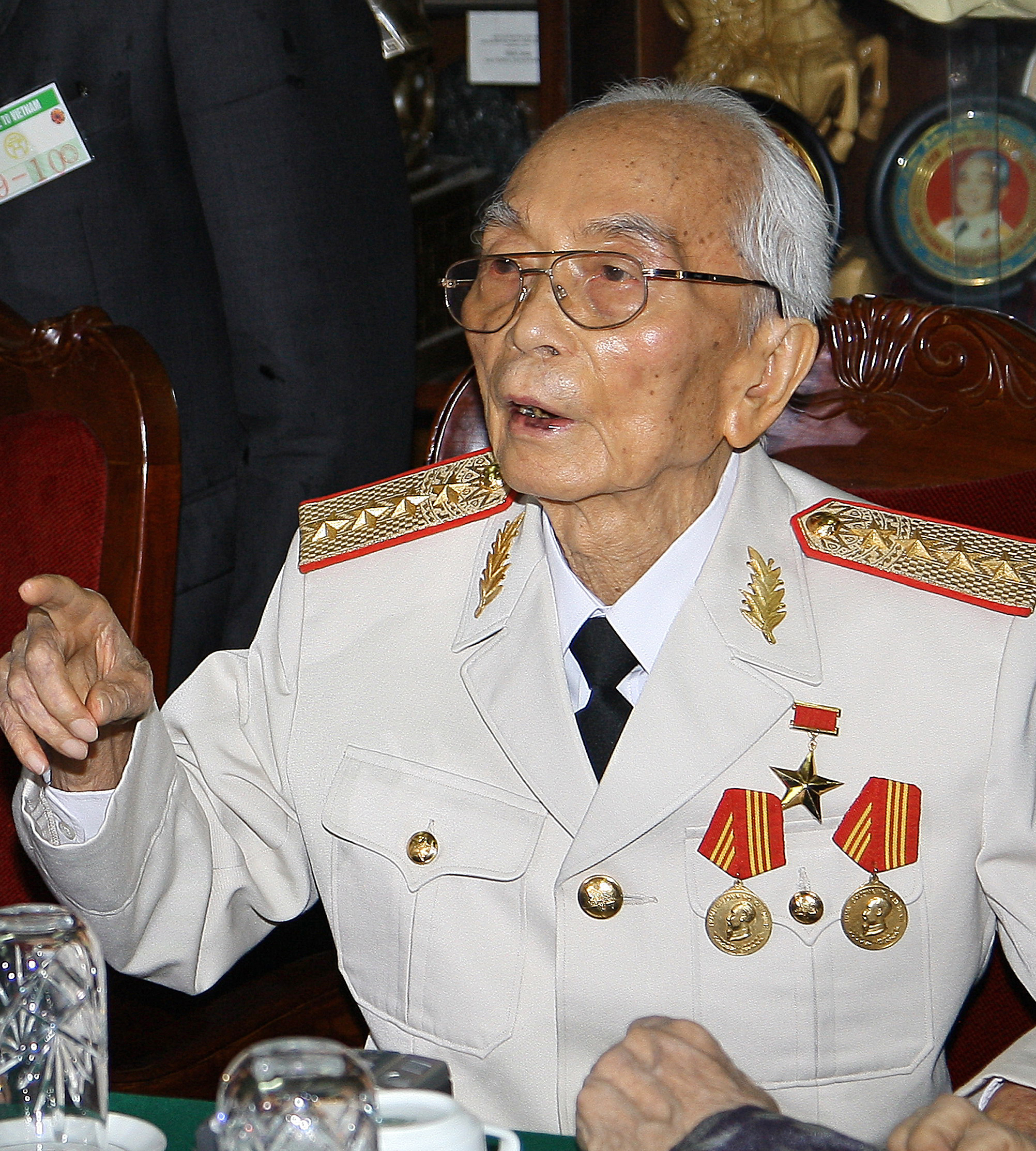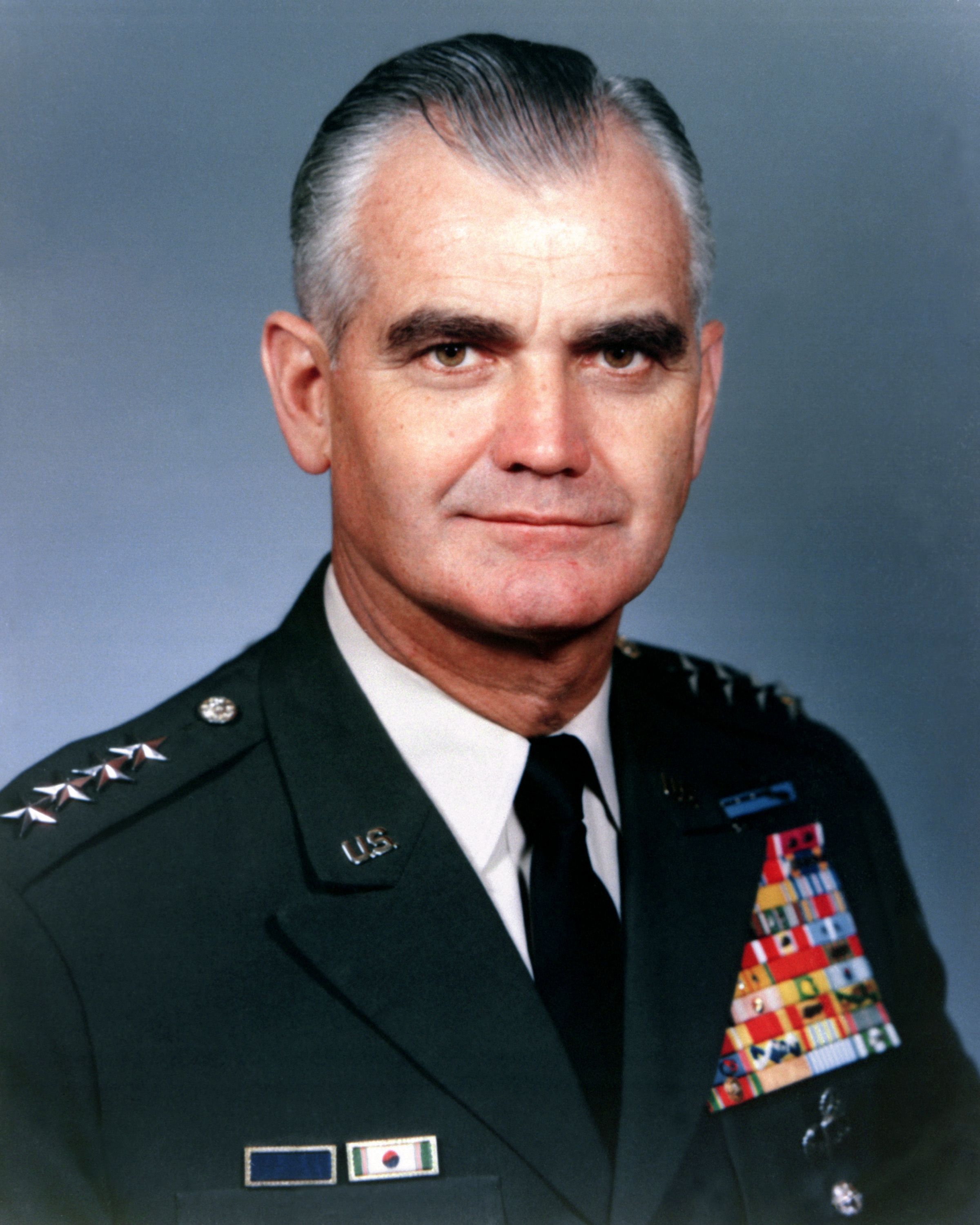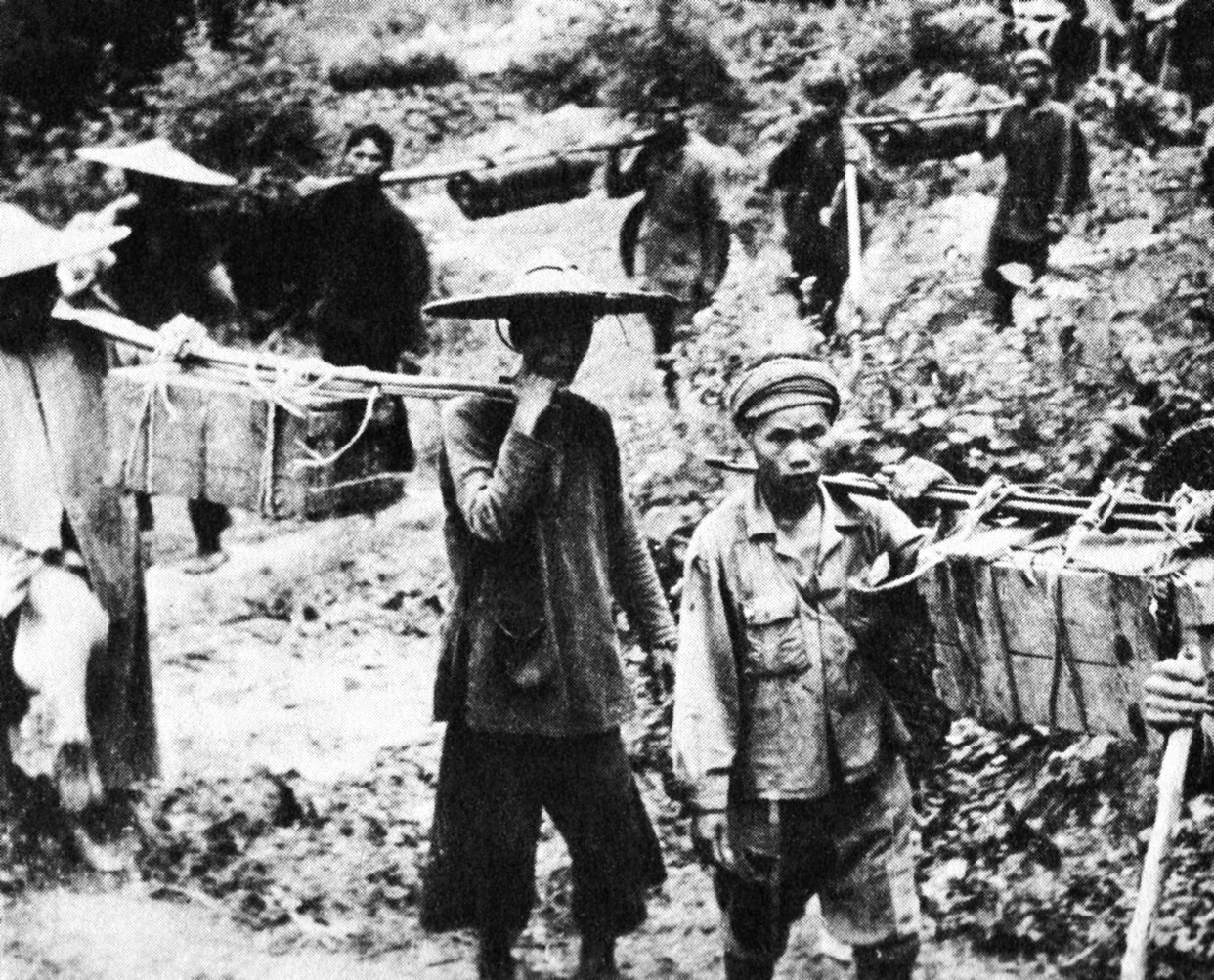|
Hoàng Văn Thái
Hoàng Văn Thái (; 1 May 1915 – 2 July 1986), born Hoàng Văn Xiêm (), was a Vietnamese Army General and a communist political figure. His hometown was Tây An, Tiền Hải District, Thái Bình Province. During the 1968 Tết Offensive, he was the highest senior North Vietnamese officer in South Vietnam. He was the first chief of staff of the Vietnam People's Army, and was responsible for key military forces in North Vietnam. He was also Chief of Staff in the Battle of Điện Biên Phủ. Early life Hoàng Văn Thái was born Hoàng Văn Xiêm, on 1 May 1915 (or 1917 since his older brother was born in 1915), in the village of An Khang (now Tay An, Tiền Hải District, Thái Bình Province). His father, Hoàng Văn Thuật, was a Han Nom teacher. The third born of seven siblings, Hoàng Văn Thái was dedicated to studying and graduated from a French-Vietnamese colonial elementary school, however, he dropped out of school at the age of 13 because of financ ... [...More Info...] [...Related Items...] OR: [Wikipedia] [Google] [Baidu] |
Army General (Vietnam)
Army general () is the highest military rank of Vietnam and the highest rank in the People's Army of Vietnam. According to Article 88 of the 2013 Constitution of Vietnam, the rank of General of the Vietnam People's Army is decided by the President, who is also the Chairman of the National Defense and Security Council. The rank of Army General is conferred only on senior officers holding the following positions: Minister of Defence (Vietnam), Minister of National Defense, Chief of the General Staff (Vietnam), Chief of the General Staff and Director of the General Political Department. Exceptions include: * Hoàng Văn Thái was promoted in 1980 while serving as Deputy Minister of National Defense and Deputy Chief of the General Staff, although he was the first Chief of the General Staff from 1945–1954 and acted briefly as Chief of the General Staff in 1954 and 1974). * Lê Đức Anh in 1984 when he was Deputy Minister of Defense and commander of Vietnamese volunteer troops in ... [...More Info...] [...Related Items...] OR: [Wikipedia] [Google] [Baidu] |
Hanoi
Hanoi ( ; ; ) is the Capital city, capital and List of cities in Vietnam, second-most populous city of Vietnam. The name "Hanoi" translates to "inside the river" (Hanoi is bordered by the Red River (Asia), Red and Black River (Asia), Black Rivers). As a Municipalities of Vietnam, municipality, Hanoi consists of 12 List of urban districts of Vietnam, urban districts, 17 Huyện, rural districts, and 1 District-level town (Vietnam), district-level town. The city encompasses an area of . and as of 2024 has a population of 8,718,000. Hanoi had the second-highest gross regional domestic product of all Vietnamese provinces and municipalities at US$51.4 billion in 2022, behind only Ho Chi Minh City. In the third century BCE, the Cổ Loa Citadel, Cổ Loa Capital Citadel of Âu Lạc was constructed in what is now Hanoi. Âu Lạc then Vietnam under Chinese rule, fell under Chinese rule for a thousand years. In 1010, under the Lý dynasty, Vietnamese emperor Lý Thái Tổ established ... [...More Info...] [...Related Items...] OR: [Wikipedia] [Google] [Baidu] |
Hoàng Văn Thái
Hoàng Văn Thái (; 1 May 1915 – 2 July 1986), born Hoàng Văn Xiêm (), was a Vietnamese Army General and a communist political figure. His hometown was Tây An, Tiền Hải District, Thái Bình Province. During the 1968 Tết Offensive, he was the highest senior North Vietnamese officer in South Vietnam. He was the first chief of staff of the Vietnam People's Army, and was responsible for key military forces in North Vietnam. He was also Chief of Staff in the Battle of Điện Biên Phủ. Early life Hoàng Văn Thái was born Hoàng Văn Xiêm, on 1 May 1915 (or 1917 since his older brother was born in 1915), in the village of An Khang (now Tay An, Tiền Hải District, Thái Bình Province). His father, Hoàng Văn Thuật, was a Han Nom teacher. The third born of seven siblings, Hoàng Văn Thái was dedicated to studying and graduated from a French-Vietnamese colonial elementary school, however, he dropped out of school at the age of 13 because of financ ... [...More Info...] [...Related Items...] OR: [Wikipedia] [Google] [Baidu] |
Gold Star Order (Vietnam)
Gold Star Order () is the highest decoration in Vietnam awards and decorations awarded by the Government of Vietnam for a military or civil "personnel who completed exceptional service or organization established excellent achievement for the revolutionary cause of the Party and Nation." The order was established on June 6, 1947, following the decree No. 58/SL by the Government of the Democratic Republic of Vietnam, its design was modified by the Law of Emulation and Reward promulgated on November 26, 2003. Appearance According to the 1947 decree, the medal of Gold Star Order consisted of two parts, a five-pointed star in gilt-bronze attached to a red neckband with yellow edge. The 2003 Law proposed a new model of the medal which are composed of three parts, the five-pointed star, the ribbon and the bar symbolizing the Flag of Vietnam. File:Huân chương Sao vàng (1947-2003).png, The Gold Star Order in 1947 to 2003 File:Vietnam Medal (9732377137).jpg, Current Gold Star Order on d ... [...More Info...] [...Related Items...] OR: [Wikipedia] [Google] [Baidu] |
Vietnam Gold Star Ribbon
Vietnam, officially the Socialist Republic of Vietnam (SRV), is a country at the eastern edge of mainland Southeast Asia, with an area of about and a population of over 100 million, making it the world's fifteenth-most populous country. One of two communist states in Southeast Asia, Vietnam shares land borders with China to the north, and Laos and Cambodia to the west. It shares maritime borders with Thailand through the Gulf of Thailand, and the Philippines, Indonesia, and Malaysia through the South China Sea. Its capital is Hanoi and its largest city is Ho Chi Minh City. Vietnam was inhabited by the Paleolithic age, with states established in the first millennium BC on the Red River Delta in modern-day northern Vietnam. Before the Han dynasty's invasion, Vietnam was marked by a vibrant mix of religion, culture, and social norms. The Han dynasty annexed Northern and Central Vietnam, which were subsequently under Chinese rule from 111 BC until the first dynasty e ... [...More Info...] [...Related Items...] OR: [Wikipedia] [Google] [Baidu] |
Tet Offensive
The Tet Offensive was a major escalation and one of the largest military campaigns of the Vietnam War. The Viet Cong (VC) and North Vietnamese People's Army of Vietnam (PAVN) launched a surprise attack on 30 January 1968 against the forces of the South Vietnamese Army of the Republic of Vietnam (ARVN), the United States Armed Forces and their allies. It was a campaign of surprise attacks against military and civilian command and control centers throughout South Vietnam. The name is the truncated version of the Lunar New Year festival name in Vietnamese, Tết Nguyên Đán, with the offense chosen during a holiday period as most ARVN personnel were on leave. The purpose of the wide-scale offensive by the Hanoi Politburo was to trigger political instability in a belief that mass armed assault on urban centers would trigger defections and rebellions. The offensive was launched prematurely in the early morning hours of 30 January in large parts of the I and II Corps Tactical Z ... [...More Info...] [...Related Items...] OR: [Wikipedia] [Google] [Baidu] |
Vietnam War
The Vietnam War (1 November 1955 – 30 April 1975) was an armed conflict in Vietnam, Laos, and Cambodia fought between North Vietnam (Democratic Republic of Vietnam) and South Vietnam (Republic of Vietnam) and their allies. North Vietnam was supported by the Soviet Union and China, while South Vietnam was supported by the United States and other anti-communist nations. The conflict was the second of the Indochina wars and a proxy war of the Cold War between the Soviet Union and US. The Vietnam War was one of the postcolonial wars of national liberation, a theater in the Cold War, and a civil war, with civil warfare a defining feature from the outset. Direct United States in the Vietnam War, US military involvement escalated from 1965 until its withdrawal in 1973. The fighting spilled into the Laotian Civil War, Laotian and Cambodian Civil Wars, which ended with all three countries becoming Communism, communist in 1975. After the defeat of the French Union in the First Indoc ... [...More Info...] [...Related Items...] OR: [Wikipedia] [Google] [Baidu] |
Battle Of Dien Bien Phu
The Battle of Điện Biên Phủ was a climactic confrontation of the First Indochina War that took place between 13 March and 7 May 1954. It was fought between the forces of the French Union and Viet Minh. The French began an operation to insert, and support, their soldiers at Điện Biên Phủ, deep in the autonomous Tai Federation in northwest Tonkin. The operation's purpose was to cut off enemy supply lines into the neighboring Kingdom of Laos (a French ally) and draw the Viet Minh into a major confrontation in order to cripple them. The French based their forces in an isolated but well-fortified camp that would be resupplied by air, a strategy adopted based on the belief that the Viet Minh had no anti-aircraft capability. The communist Viet Minh, however, under General Võ Nguyên Giáp, surrounded and besieged the French. They brought in vast amounts of heavy artillery (including anti-aircraft guns) and managed to move these bulky weapons through difficult terrain ... [...More Info...] [...Related Items...] OR: [Wikipedia] [Google] [Baidu] |
First Indochina War
The First Indochina War (generally known as the Indochina War in France, and as the Anti-French Resistance War in Vietnam, and alternatively internationally as the French-Indochina War) was fought between French Fourth Republic, France and Việt Minh (Democratic Republic of Vietnam), and their respective allies, from 19 December 1946 until 21 July 1954. Việt Minh was led by Võ Nguyên Giáp and Hồ Chí Minh. Most of the fighting took place in Tonkin in Northern Vietnam, although the conflict engulfed the entire country and also extended into the neighboring French Indochina protectorates of Kingdom of Laos, Laos and French protectorate of Cambodia, Cambodia. At the Potsdam Conference in July 1945, the Allied Combined Chiefs of Staff decided that Indochina south of 16th parallel north, latitude 16° north was to be included in the Southeast Asia Command under British Louis Mountbatten, 1st Earl Mountbatten of Burma, Admiral Mountbatten. On V-J Day, September 2, Hồ Chí Min ... [...More Info...] [...Related Items...] OR: [Wikipedia] [Google] [Baidu] |
People's Liberation Armed Forces
The Liberation Army of South Vietnam (LASV; ; Chữ Hán: 軍解放沔南越南), also recognized as the Liberation Army ( or ), was an irregular and regular military force established as the nominal armed wing of the National Liberation Front of South Vietnam (or Viet Cong - VC) by the Communist Party of Vietnam in 1961 in South Vietnam. It operated as a part of the existing People's Army of Vietnam (PAVN) of North Vietnam, having its name the only official organization of communist-aligned armed forces to fought in South Vietnam. In 1962, the People's Revolutionary Party of South Vietnam separated from the Communist Party of Vietnam in terms of external appearance, openly directing the Liberation Army's military. Politically, the LASV was under the direction of the VC and the Provisional Revolutionary Government of the Republic of South Vietnam. The military forces although collectively known as the Liberation Army of South Vietnam, still use the unit names, military badges an ... [...More Info...] [...Related Items...] OR: [Wikipedia] [Google] [Baidu] |
General Officer
A general officer is an Officer (armed forces), officer of high rank in the army, armies, and in some nations' air force, air and space forces, marines or naval infantry. In some usages, the term "general officer" refers to a rank above colonel."general, adj. and n.". OED Online. March 2021. Oxford University Press. https://www.oed.com/view/Entry/77489?rskey=dCKrg4&result=1 (accessed May 11, 2021) The adjective ''general'' had been affixed to officer designations since the late medieval period to indicate relative superiority or an extended jurisdiction. French Revolutionary system Arab system Other variations Other nomenclatures for general officers include the titles and ranks: * Adjutant general * Commandant-General, Commandant-general * Inspector general * General-in-chief * General of the Air Force (USAF only) * General of the Armies, General of the Armies of the United States (of America), a title created for General John J. Pershing, and subsequently grante ... [...More Info...] [...Related Items...] OR: [Wikipedia] [Google] [Baidu] |
Viet Cong
The Viet Cong (VC) was an epithet and umbrella term to refer to the communist-driven armed movement and united front organization in South Vietnam. It was formally organized as and led by the National Liberation Front of South Vietnam, and conducted military operations under the name of the Liberation Army of South Vietnam (LASV). The movement fought under the direction of North Vietnam against the South Vietnamese and United States governments during the Vietnam War. The organization had both guerrilla and regular army units, as well as a network of cadres who organized and mobilized peasants in the territory the VC controlled. During the war, communist fighters and some anti-war activists claimed that the VC was an insurgency indigenous to the South that represented the legitimate rights of people in South Vietnam, while the U.S. and South Vietnamese governments portrayed the group as a tool of North Vietnam. It was later conceded by the modern Vietnamese communist lead ... [...More Info...] [...Related Items...] OR: [Wikipedia] [Google] [Baidu] |










